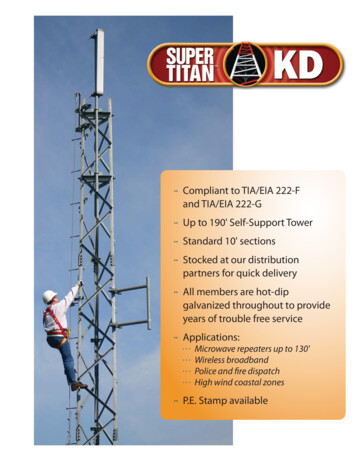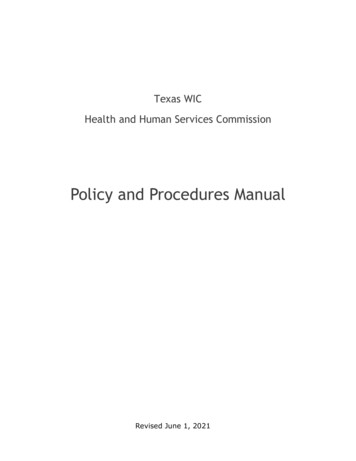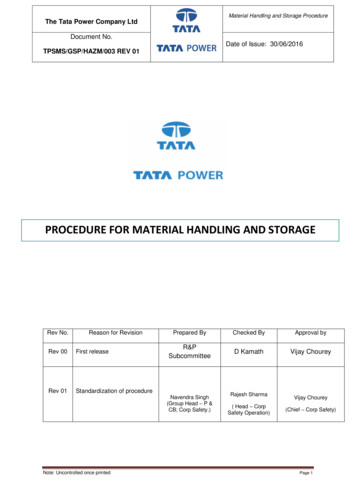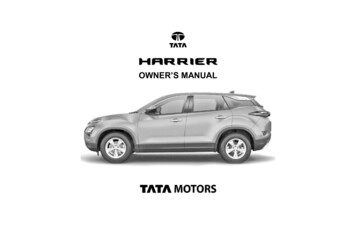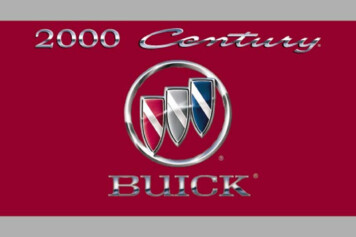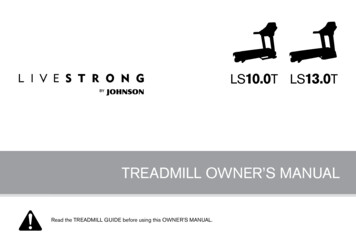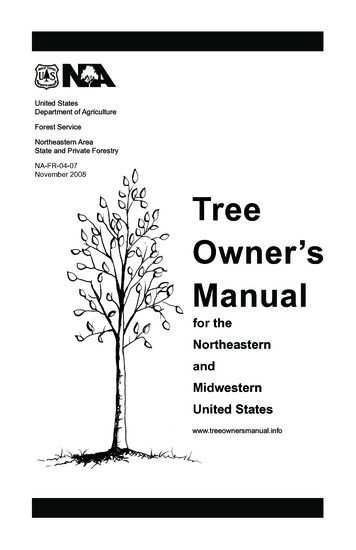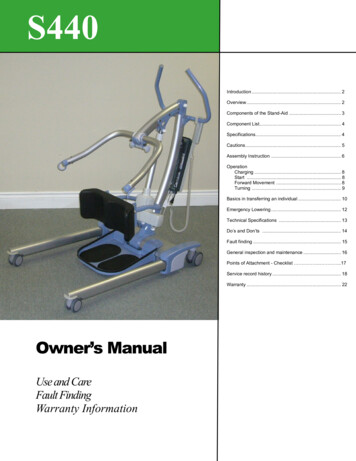
Transcription
S440Introduction . 2Overview . 2Components of the Stand-Aid . 3Component List. 4Specifications. 4Cautions. 5Assembly Instruction . 6OperationCharging . 8Start . 8Forward Movement . 8Turning . 9Basics in transferring an individual . 10Emergency Lowering . 12Technical Specifications . 13Do’s and Don’ts . 14Fault finding . 15General inspection and maintenance . 16Points of Attachment - Checklist . .17Service record history . 18Warranty . 22Owner’s ManualUse and CareFault FindingWarranty Information
CAUTION: DO NOT ATTEMPT TO USE THIS EQUIPMENTWITHOUT FIRST UNDERSTANDING THE CONTENTS OFTHIS MANUAL.IntroductionBefore using this equipment, and to ensure the safe operation of your S440 Stand-Aid, carefully read thisentire manual, especially the section on “Cautions”. The S440 is designed to be used in conjunction withWaverley Glen accessories and slings. Please refer to any user guides supplied with these components andrefer to them while reviewing this manual.Should any questions arise from reviewing this manual contact your local authorized Waverley Glen Representative. Failure to comply with warnings in this manual may result in injury to either the operator, or the individual being lifted/transferred. Damage to the Stand-Aid and/or related components may also occur. Be surethat the contents of this manual are completely understood prior to using this Stand-Aid.Store this manual with the documents included with the Stand-Aid and sling (s). Contents of this manual aresubject to change without prior written notice.Overview of S440 Stand-AidThe S440 is a lifting aid used by health care professionals to transfer clients. The Stand-Aid makes it possibleto move mobility impaired individuals with minimal strain or risk to the caregiver, while providing completesafety, dignity and comfort for the client.The S440 Stand-Aid is one of two components that make up this technology. The other component, the sling,is a specially designed fabric accessory that attaches to the Stand-Aid by means of a carry bar and straps, andholds an individual while the lift, positioning or transfer takes place. The sling is generally supplied with theStand-Aid at the initial time of purchase. Please refer to any user guides supplied with the sling and referencethem while reviewing this manual.The S440 has the ability to lift an individual up from one location such as chair, move the individual to another location and finally lower the individual into a wheelchair. The functions of lifting up or down, or opening and closing the legs on the lift, are accomplished by pressing buttons on the hand control. The hand controlis attached to the Stand-Aid. Due to the design of the Stand-Aid system, it takes very little effort to press a button to perform the desired motion.Please familiarize yourself with the components of the S440 Stand-Aid by referring to the diagram on thenext page.280763—S440 - Owner’s ManualRev: 5/22/2008Page: 2
Components of the Stand-AidHandleBoomHygiene Sling HooksSling HooksMastControl Box& BatteryLeg SupportMain ActuatorKnee PadCustom ScrewsLegBaseFoot PlateRear CasterBase End CapMast SupportFront Caster280763—S440 - Owner’s ManualRev: 5/22/08Page: 3
Component ListThe following components are included with your new S440 Stand-Aid system: S440 Stand-AidHand ControlStand-Aid Integrated ChargerOwner’s ManualWarranty CardTwo 6mm Hex Allan Keys (Long Arm)5mm Hex Allan Key (Short Arm)3mm (Hex Allan Key (Short Arm)SLINGS: If a sling has been supplied with the Stand-Aid refer to the instructions included with the sling.ACCESSORIES: If additional accessories have been supplied with the Stand-Aid refer to the instructionsincluded with those items.IMPORTANT: Before initial use, the Stand-Aid unit must be charged for 4 hours. Refer to section titled"Charging Instructions". The hand control must also be connected to the Stand-Aid. If it is notconnected refer to the section titled “Assembly Instructions”.Specifications of the S440 Stand-AidLift Motor:Charger Input:Charger Output:Batteries:Hand Control:Lifting Range:Lift Weight:Maximum Load:Duty Cycle:Rated Performance:24 VDC, 10 Amps Max.100-240 VAC, 50-60 Hz, 0.4 Amps Max.24 VDC, 0.65 Amps24 VDC (2 x 12 VDC) 2.9 Ah, Sealed Lead AcidElectric24” to 70”118 lbsStandard maximum load 440 lbs.10% use, 90% rest35-40 lifts at 440 lbs, 10% duty cycle, 140-150 lifts at 200lbs, 10% duty cycle. Each liftbeing 24 inches at the middle of the lifting range, per full batteryPlease note: the Stand-Aid has a break in period; breaking in of the Stand-Aid will need to be done before these numberswill be achieved. The breaking in period will vary from Stand-Aid to Stand-Aid and is dependent on the frequency of useand the types of load being applied, the higher the load and a greater frequency of use will break in the Stand-Aid faster.280763—S440 - Owner’s ManualRev: 5/22/2008Page: 4
Cautions Under no circumstance should the S440 and sling (s) be put in control of a person who has not beenproperly trained in the use and care of this equipment. Failure to adhere to this warning may result inserious injury to the operator, and/or the individual being lifted/ transferred. The S440 Stand-Aid and sling (s) are not toys. Do not use it for unsafe practices. Do not allowchildren to play with the Stand-Aid or any of its’ components. The manufacturer's warranty is voided if persons unauthorized by Waverley Glen performs work onthe S440 Stand-Aid. There are no user serviceable parts inside the actuator. Do not remove cover screws, or open theunit, as this will VOID THE WARRANTY. In facilities where more than one operator will be responsible for using the S440 and sling (s) it isimperative that all such members be trained in its’ proper use. A training program should beestablished by the facility to acquaint new operators with this equipment. Never expose the S440 Stand-Aid directly to water. Warranty does not cover any misuse orabuse of the Stand-Aid system. To maintain optimum function, the S440 should be inspected and maintained on a regular basis. Seethe section titled “General Inspection and Maintenance”. Any accessories used with the S440 including sling (s), should be checked to ensure that they are ingood working order. Check for signs of wear or fraying prior to use. Report anyunusual wear, or damage immediately to your local authorized Waverley Glen Service Provider. The S440 Stand-Aid and associated sling (s) are intended only for lifting and transferring of aperson. Waverley Glen will not be responsible for any damage caused by the misuse, neglect orpurposeful destruction of the lift, and/or its’ associated components. Do not in any circumstance exceed the maximum allowable load of this lift. Refer to the“Specifications” section of this manual, and/or the labels on the side of the lift. There is a risk of explosion if the lift is used in the presence of flammable anaesthetics. Ensure that a clear space is maintained around the lift. Move any obstacles out of the way beforeoperating the Stand-Aid.280763—S440 - Owner’s ManualRev: 5/22/08Page: 5
Assembly InstructionBushingCustom 440 - Owner’s ManualRev: 5/22/2008Page: 6
Assembly Instruction—Cont’d280763—S440 - Owner’s ManualRev: 5/22/08Page: 7
OperationCaution: Visually inspect the Stand-Aid for any unusual wear and tear. Should anything look unusual then contact your local representative prior to use.Failure to comply with this caution could result in serious injury to the operator, the individual beinglifted and/or damage to the lift.Because of the safety function in the actuator the lifting arm and hanger bar can “fall down“ to theheight of the spindle. Therefore, both before and after each lifting operation, press the lifting arm downto ensure that it is supported by the actuator. This must be done, to remove the possibility of the liftingarm “falling down” and the risk of subsequent injury occurring.ChargingThe “On” light illuminates when you plug the control box into the wall and should turn off when it isunplugged. The “Charge” light illuminates when you connect the battery to the control box and it ischarging. The “charge” light will turn off when the battery is finished charging.The lift should be plugged in whenever the lift is not in use to get the max number of cycles out of thebattery. An audible alarm will sound when the battery reaches 50% charge. To obtain max life,charge the battery at no more than 30% discharge.Please Note: The battery can be charged whether the Emergency Stop is activated or not.StartThe Hand Control has four functions up/down and in/out. Press down on the symbols to operatethe desired function. It is not possible to use two functions at the same time.An audible alarm will sound once the load becomes too great on the lift. This will cause the liftingoperation to stop. Do not continue to operate the handset by repeatedly pressing the buttons. Atthis point the lift has reached it's maximum lift. This is a purposefully built in safety feature.Please Note!The emergency stop must be released at all times during normal operation.Forward MovementTo move the lift forward, hold onto the handle bar (1) and push forward. Alternatively, the caregivercan also place one foot on the motor casing (2) and push forward with their foot .12280763—S440 - Owner’s ManualRev: 5/22/2008Page: 8
TurningWhen turning the lift, stand on the long side. With one hand pull gently on the handle bar, and with the otherhand push gently away on the lifting arm. In this way the lift will rotate around its own axis. This movement isperformed with a smooth, slow action to avoid swinging the patient unnecessarily.WarningDo not hold onto the actuator or swing link when turning the lift as there is a risk of getting your fingerscaught.ApplicationIf the lift is used incorrectly any warranty or product liability might cease to be valid.The mobile lift must only be used for person lifting and only for persons who, including the sling, do notweigh more than the stated max. weight load. If the load exceeds the stated weight limit and if the lift is usedfor lifting anything but persons, then any product liability that Waverley Glen might have, in connection withinsurance / warranty / maintenance etc., will cease to be valid.To avoid possible accidents and injury to persons being lifted, the mobile lifts must only be operated as described in the preceding pages.280763—S440 - Owner’s ManualRev: 5/22/08Page: 9
Basics in transferring an individualCaution: The following steps are intended to generally illustrate the procedure involved in the liftingand transferring of an individual from one location to another using the Stand-Aid.The manual for the sling that was purchased with the lift should be reviewed in detail prior to attempting these steps, as the sling illustrated here may not be the same as the one that was purchased.Contact your local authorized Waverley Glen Representative if you have any questions or concerns.Step 1) Unplug the lift from its charging station or current location and close to the individual that is to betransferred. Use the procedures for up and down and transferring as described in the sections titled, “Start”,“Forward Movement” and “Turning”.Caution: Always use extreme care when moving the lift from location to another. Watchout for and avoid any obstructions that may cause injury to the individual in the sling, or damage to the lift.Step 2) Prepare the individual being transferred with the appropriate sling. Refer to the instructions suppliedwith the sling that was purchased on how to properly outfit an individual with a sling.Caution: Always make sure that the sling is correctly fitted and adjusted on each side of theindividual so that maximum comfort and safety are achieved prior to lifting.Step 3) Once the individual has been outfitted with the sling, move the lift so that it is positioned directly overthe individual. Lower the carry bar to a height so that the straps of the sling can be easily attached to the carrybar.Caution: Always check to ensure that the lift is correctly positioned directly above the person to be lifted.Caution: Check to ensure that the carry bar has no cuts, dents or sharp edges that maycome in contact with the straps of the sling and cause damage to them. Report any concerns toyour local authorized representative.Step 4) Attach the straps of the sling to the hooks of the carry bar. The straps on each side of the sling are generally attached to the corresponding side of the carry bar. Be sure to double check to ensure that the straps areproperly attached to the carry bar, and that the individual being lifted is properly positioned in the sling prior tolifting.Caution: Prior to lifting an individual make sure that the straps of the sling are securelyplaced on the hooks of the carry bar.280763—S440 - Owner’s ManualRev: 5/22/2008Page: 10
Basics in transferring an individual continuedStep 5) The individual may now be raised with the use of the UP button on the hand control. While lifting isin progress the height required in order for the transfer to be completed safely should be closely observed. Ensure that the individual being lifted will not be injured by any obstructions during the initial lifting.Caution: Always use caution when lowering/raising an individual who is in the sling of thelift. Watch out for and avoid any obstructions that may cause injury to the individual, or damage to the lift.Step 6) Once at the correct height the individual can be moved to the desired location. Refer to the sectionsalready described in this manual on how to do so.Step 7) Once at the desired location the individual in the sling can be lowered/raised to the correct height inorder to complete the transfer. On completion of lowering/raising ensure that the individual is properly positioned and safely supported prior to removing the straps of the lift from the carry bar.Caution: Prior to removing the straps of the sling from the carry bar be sure to check thatthe individual being lifted is securely supported in the final desired position.Step 8) Lower the carry bar sufficiently to allow the straps of the sling to be easily removed from the carrybar. Take care not to let the carry bar come in contact with the individual in the sling. The straps from the slingcan now be removed from the carry bar. The lift should then be moved away from the immediate area so that itwill not interfere with the removal of the sling from the client.Step 9 ) The sling can now be gently removed from the individual. It should then be stored in a safe place forfuture use.Step 10) The lift can now be moved to a safe location until further use, or relocated to its' original location.The lift should be turned off when not in use. It is recommended that the lift be left on charge when not in operation. Refer to the section titled, “Charging the lift” for instructions on charging.280763—S440 - Owner’s ManualRev: 5/22/08Page: 11
Emergency LoweringCaution: The manual emergency lowering system should be used only if the lowering procedures described in the previous section of the manual do not work. Should you have any concerns or questionscontact your local authorized Waverley Glen Representative.Caution: DO NOT use the lift after the manual lowering mechanism has been used. The lift must be resetby a qualified lift technician after use. Contact your local authorized Waverley Glen Service Provider.Push the Emergency Stop button to cut all power on the Floor Lift. To resume power, press the EmergencyStop button and rotate.Insert a fine tip, such as the tip of a pen, in the holethat is marked with a symbol below.Press and hold down. The lift will continue loweringas you continue pressing down. Release to stop theemergency lowering.The S440 is fitted with an additional emergency loweringmechanism should the above method fail. In order tolower the boom in an emergency situation, press up on thered lever located directly on the lift’s actuator. The boomwill lower as you press and hold the lever. Release the redlever once you have lowered the boom to a safe position.280763—S440 - Owner’s ManualRev: 5/22/2008Page: 12
S440 Stand-Aid SpecificationsS440Stand AidSpecificationHeight to top of legs4.8 inches (122 mm)Clearance from bottom of legs to floor1.9 inches (48 mm)Wheels (dual-wheel castors)Front – 3” (76 mm)Rear – 4” (101 mm)with brakeLength of lifting arm2.7 feet (82 cm)Length of legs2.5 feet (76 cm)Distance inside the legs (min)2 feet (61 cm)Distance inside the legs (max)4.2 feet (128 cm)Distance outside the legs (min)2.3 feet (70 cm)Distance outside the legs (max)4.7 feet (143 cm)Turning radius4.3 feet (131 cm)Lifting height (min)2 feet (61 cm)Lifting height (max)5.8 feet (177 cm)Lifting range3.8 feet (116 cm)Maximum weight load440 lbs (200 kgs)Total Shipping Weight: WGS Box70 lbs (32 kgs) /68 lbs (31 kgs)Weight lower section – Without BoxWeight upper section – Without Box280763—S440 - Owner’s ManualRev: 5/22/0860 lbs (27 kgs)58 lbs (26 kgs)Page: 13
DO’S & DON’TSDODo charge the battery whenever possible. This will extend the battery life. A large number ofcycles can be obtained from operating on the batteries, but battery lifetime is reduced with frequentdischarging.Do inspect all cables particularly the mains power cable on the charger for any damage; replacewhere necessary.Do stow the HB handset and if fitted with charger, the mains power cable when transporting the lift.Do clean the actuators, control box, charger, battery and handset at regular intervals to remove dustand dirt.The exterior of the lift should only be cleaned, disinfected and sterilized using isopropyl alcohol. Damp acloth with isopropyl alcohol and wipe down entire exterior of lift. No other chemicals and/or liquids shouldbe used to clean, disinfect and sterilize this lift.Caution: Take great care to ensure that no liquids get insidethe lift. This lift is not drip proof or water tight. Failure toprotect the lift from liquids may result in damage to the lift and/or may cause personal injury.DON'TDon't allow the batteries to fully discharge before connecting to the charger. The batteries are a leadacid gel cell type that can be trickled charged continuously (batteries used for standby) an have ahigh current discharge capacity. Life is greatly reduced by deep or complete discharging of the batteries. Longer lifetime is obtained by maintaining fully charged batteries.Don't continue to operate the handset by repeatedly pressing the buttons if the lift function will notmove or the actuator will not function. If this occurs then the actuator has either reached its end position, the load is too great or there is a malfunction.Don't exert excessive force on the handset cable as this may break off the wires inside the cable andprevent some or all of the operations.Don't continually operate the lift functions. The system is not designed for continuous operation.Continuous operation will cause batteries to be deeply discharged or to damage the actuator or control box by overheating.280763—S440 - Owner’s ManualRev: 5/22/2008Page: 14
Fault FindingShould problems arise with the use of the lift review the following chart. Find the fault and complete the recommended solution. If the fault is not found and/or the solution does not correct the problem contact your localWaverley Glen Service Provider for service immediately.PROBLEMSOLUTIONLift cannot raise/lower, control box is not clicking. Lift cannot raise/lower, control box is clicking. Lifting actuator (1) is not fully plugged into slot (1) on the Emergency Lower button on control box does not lower.Hand control is not properly plugged in.Hand control is defective.Control box is defective.control box.Lifting actuator is defective. Lifting actuator cord (1) is not fully plugged into slot (1) on the control box.Lifting actuator is defective.Control box is defective.Lift cannot spread or close legs, control box is not clicking. Hand control is not properly plugged in.Hand control is defective.Control box is defective.Lift cannot spread or close legs, control box is clicking. Spreading actuator cord (2) is not fully plugged into slot (2) on the control box.Spreading actuator is defective.Cannot move lift. Rear caster brake is engaged.Casters are defective.Cannot tighten Mast into Mast Support. White compression washers are defective, replace withnew washers.280763—S440 - Owner’s ManualRev: 5/22/08Page: 15
General Inspection and MaintenanceA) Each Use - To be completed by User All functions on hand control are operational.B) Semi-Annually - To be completed at least every 6 months.Should any of these items fail the inspection do not use the lift. Contact Waverley Glen Systems oryour local qualified service technician for service. Complete the inspection as noted in the “Each Use” section above.Also check the following: Battery charger functional. Weigh scale functional (if applicable). Casters are clean and free of debris. All bolts and attachment points are secure (see next page for “Points of Attachment”) Visual inspection of all weld points and cast components. Check operation of the emergency stop button.C) Annually - To be completed at least every 12 months. Complete the inspection as noted in the “Semi-Annually” section above.Also check the following: Perform a working load test of one (1) lifting cycle with the maximum load. This is in accordance to the periodic inspection requirements of ISO10535. Check functional operation of the emergency lowering mechanism. All bolts in connection with the carry bar must be inspected, greased and tightened. All defective or worn components must be replaced. Connection bolts/bearings between arm and mast to be inspected. All defective or worn components must be replaced. Leg spreading function to be tested and all bolts to be inspected. All defective or worn components must be replaced. Check that main actuator is functional.This section to be only completed by a qualified service technician as authorized by WaverleyGlen.280763—S440 - Owner’s ManualRev: 5/22/2008Page: 16
Stand Aid Lift - Points of AttachmentUse the described tools to tighten the bolts on a monthly basis in the areas shown.5mm AllenKey3mmAllen KeyLeg Support1/4” Allen Keys6mm Allen Key(under the base)8mm Allen Key280763—S440 - Owner’s ManualRev: 5/22/08Page: 17
Service Record History - Initial Information Complete the following section on Purchase and Service Information as soon as thisequipment is purchased.Use the service record history to record to any completed service and repairs.Ensure that the service record is signed and dated each time it is used.Be sure to have this piece of equipment serviced on a regular basis as described in theGeneral Inspection and Maintenance Section.PURCHASE INFORMATION:Product Name:Model:Serial#:S440 Stand-AidDate of Purchase:Purchased From:(local authorized Waverley Glen Representative)Address:City:Telephone No:Postal Code:Comments:SERVICE INFORMATION:Contact the following company for service:Company:(local authorized Waverley Glen Representative)Address:City:Telephone No:Postal Code:Comments:280763—S440 - Owner’s ManualRev: 5/22/2008Page: 18
Service Record HistoryDate:Service Type: Periodic InspectionComplete this section after each service, repair inspection and/or maintenance. Photocopy additional pages as required.Time: Monthly InspectionCompleted By: 6 Month Inspection Repair Yearly Inspection Other:Printed NameSignatureCompany:Remarks & Action Taken:Date:Service Type: Periodic InspectionTime: Monthly InspectionCompleted By: 6 Month Inspection Repair Yearly Inspection Other:Printed NameSignatureCompany:Remarks & Action Taken:Date:Service Type: Periodic InspectionTime: Monthly InspectionCompleted By: 6 Month Inspection Repair Yearly Inspection Other:Printed NameSignatureCompany:Remarks & Action Taken:Date:Service Type: Periodic InspectionTime: Monthly InspectionCompleted By: 6 Month Inspection Repair Yearly Inspection Other:Printed NameSignatureCompany:Remarks & Action Taken:Date:Service Type: Periodic InspectionTime: Monthly InspectionCompleted By: 6 Month Inspection Repair Yearly Inspection Other:Printed NameSignatureCompany:Remarks & Action Taken:Date:Service Type: Periodic InspectionTime: Monthly InspectionCompleted By: 6 Month Inspection Repair Yearly Inspection Other:Printed NameSignatureCompany:Remarks & Action Taken:280763—S440 - Owner’s ManualRev: 5/22/08Page: 19
Service Record HistoryDate:Service Type: Periodic InspectionComplete this section after each service, repair inspection and/or maintenance. Photocopy additional pages as required.Time: Monthly InspectionCompleted By: 6 Month Inspection Repair Yearly Inspection Other:Printed NameSignatureCompany:Remarks & Action Taken:Date:Service Type: Periodic InspectionTime: Monthly InspectionCompleted By: 6 Month Inspection Repair Yearly Inspection Other:Printed NameSignatureCompany:Remarks & Action Taken:Date:Service Type: Periodic InspectionTime: Monthly InspectionCompleted By: 6 Month Inspection Repair Yearly Inspection Other:Printed NameSignatureCompany:Remarks & Action Taken:Date:Service Type: Periodic InspectionTime: Monthly InspectionCompleted By: 6 Month Inspection Repair Yearly Inspection Other:Printed NameSignatureCompany:Remarks & Action Taken:Date:Service Type: Periodic InspectionTime: Monthly InspectionCompleted By: 6 Month Inspection Repair Yearly Inspection Other:Printed NameSignatureCompany:Remarks & Action Taken:Date:Service Type: Periodic InspectionTime: Monthly InspectionCompleted By: 6 Month Inspection Repair Yearly Inspection Other:Printed NameSignatureCompany:Remarks & Action Taken:280763—S440 - Owner’s ManualRev: 5/22/2008Page: 20
Service Record HistoryDate:Service Type: Periodic InspectionComplete this section after each service, repair inspection and/or maintenance. Photocopy additional pages as required.Time: Monthly InspectionCompleted By: 6 Month Inspection Repair Yearly Inspection Other:Printed NameSignatureCompany:Remarks & Action Taken:Date:Service Type: Periodic InspectionTime: Monthly InspectionCompleted By: 6 Month Inspection Repair Yearly Inspection Other:Printed NameSignatureCompany:Remarks & Action Taken:Date:Service Type: Periodic InspectionTime: Monthly InspectionCompleted By: 6 Month Inspection Repair Yearly Inspection Other:Printed NameSignatureCompany:Remarks & Action Taken:Date:Service Type: Periodic InspectionTime: Monthly InspectionCompleted By: 6 Month Inspection Repair Yearly Inspection Other:Printed NameSignatureCompany:Remarks & Action Taken:Date:Service Type: Periodic InspectionTime: Monthly InspectionCompleted By: 6 Month Inspection Repair Yearly Inspection Other:Printed NameSignatureCompany:Remarks & Action Taken:Date:Service Type: Periodic InspectionTime: Monthly InspectionCompleted By: 6 Month Inspection Repair Yearly Inspection Other:Printed NameSignatureCompany:Remarks & Action Taken:280763—S440 - Owner’s ManualRev: 5/22/08Page: 21
WarrantyThis Warranty does not affect or in any way limit your Statutory Rights1) Subject to the exclusions set out in Clause 2, the conditions set out in Clause 3 and the limitations set out inClause 4, Waverley Glen, as sole licensed representative of Corven Healthcare Inc., guarantees allequipment supplied as new against failure within the period of 1 year from date of purchase by virtue ofdefects in material or workmanship.2) This guarantee does not apply to failure attributable to normal wear and tear, damage by natural forces,user neglect or misuse or to deliberate destruction, or to batteries more than 90 days after original purchase.3) This guarantee shall be void if the equipment is not serviced by Waverley Glen or its authorized serviceagents in accordance with the manufacturer’s recommendations or if any unauthorized person carries outworks on the equipment.4) The liability of Waverley Glen under the terms of this guarantee shall be limited to the replacement ofdefective parts and in no event shall Waverley Glen incur liability for any consequential or unforeseeablelosses.This document conforms to EN ISO 10535 requirements Trade-mark of Corven Health Care Inc. Used under licence.Printed in Canada280763—S440 - Owner’s ManualRev: 5/22/2008Page: 22
280763—S440 - Owner's Manual Rev: 5/22/2008 Page: 4 Specifications of the S440 Stand-Aid Lift Motor: 24 VDC, 10 Amps Max. Charger Input: 100-240 VAC, 50-60 Hz, 0.4 Amps Max. Charger Output: 24 VDC, 0.65 Amps Batteries: 24 VDC (2 x 12 VDC) 2.9 Ah, Sealed Lead Acid Hand Control: Electric Lifting Range: 24" to 70"
